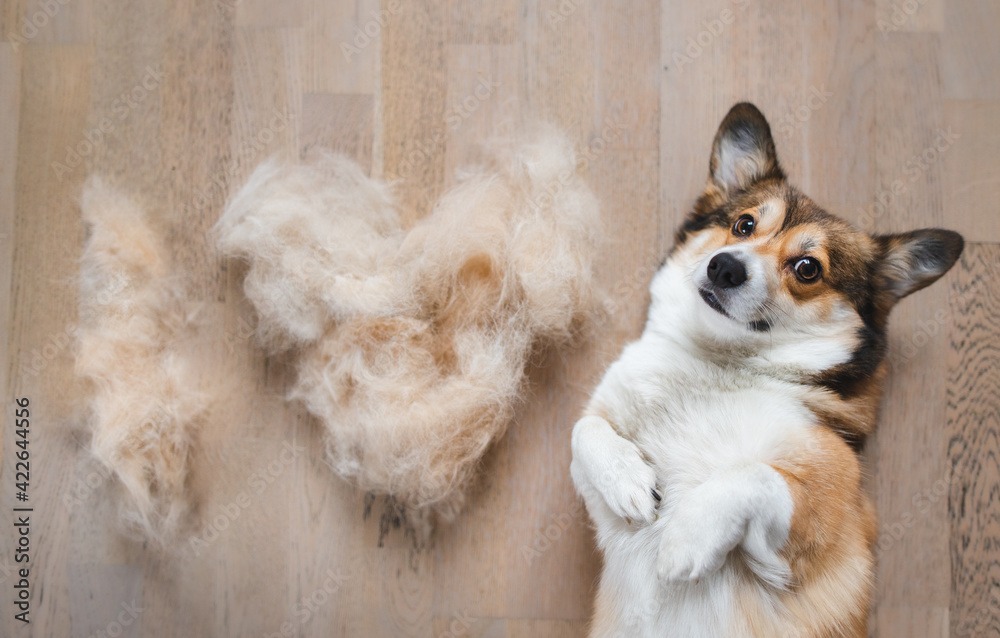Adapting Your Pet’s Grooming Routine: A Seasonal Approach
I might receive a small commission if you click on our links and make purchases. However, please keep in mind that this does not affect reviews, product comparisons, or recommendations. We try to keep things fair and balanced to help you choose your needs best. Clicking the link does not affect your total cost.
Pets need different types of grooming care throughout the year to stay comfortable and healthy. Seasonal changes affect their coat, skin, and paw health, making it essential to adapt grooming practices to keep them in peak condition. Each season brings unique challenges and opportunities, from protecting against dry skin in winter to managing shedding in spring and summer. This guide on adapting your pet’s grooming routine to the seasons will walk you through seasonal grooming adjustments, covering tips for every time of year. By tailoring your grooming routine to your pet’s needs, you can keep them happy, healthy, and looking great all year.`
Understanding the Importance of Seasonal Grooming
Seasonal grooming is crucial for maintaining your pet’s health and comfort throughout the year. Temperature, humidity, and daylight changes can significantly impact a pet’s coat and skin, making regular grooming adjustments essential. By adapting your pet’s grooming routine to the seasons, you can help reduce shedding, prevent matting, and address skin dryness or irritation caused by environmental changes. Certain breeds, like double-coated dogs, may require specific adjustments, such as more frequent brushing during shedding seasons, while short-haired breeds may benefit from extra warmth in colder months. Seasonal grooming is also part of preventive health care, reducing the risk of infections, skin issues, and discomfort while keeping your pet feeling their best year-round. Seasonal grooming: adapting your pet’s care routine throughout the year makes a significant difference.
Winter Grooming Tips for Your Pet
Winter weather can dry out your pet’s skin and cause discomfort, making moisturizing essential for maintaining skin health. Using pet-safe moisturizers or conditioners helps soothe dry, itchy skin brought on by cold, dry air and heating indoors. Cold weather and salt-treated roads can also harm your pet’s paws, leading to cracking and irritation. Protect their paws using pet-safe balms and rinsing them after walks to remove salt or ice. Keep your pet’s coat at an appropriate length to balance warmth with comfort; trimming too short can expose them to the cold, especially in short-haired breeds. For indoor bathing during winter, use lukewarm water and dry your pet thoroughly to avoid prolonged dampness, which can lead to chills. Adapting your pet’s grooming routine to the seasons, especially in winter, ensures their comfort and health.
Spring Grooming Tips: Shedding Season Essentials
Spring marks the start of shedding season, especially for double-coated breeds, making regular brushing a must to help manage fur loss. Brushing removes loose fur and helps ease the coat’s transition from winter to warmer weather. Pets may also experience seasonal allergies in spring, which can lead to itchy, irritated skin, so be mindful of symptoms like excessive scratching and use hypoallergenic grooming products if needed. Spring is an ideal time for a thorough bath to remove winter residue, as accumulated oils, dirt, and dust can cause skin irritation and discomfort. Springtime mud and damp conditions also mean regular paw cleaning, as muddy paws can lead to infections or irritations if not properly cared for. Adapting your pet’s grooming routine to the seasons in spring is an essential aspect of seasonal grooming.
Summer Grooming Tips for Heat and Sun Protection
Summer brings warmer temperatures that can be uncomfortable for pets, making it essential to keep their coats cool and breathable. Light trimming can help, but avoid shaving down to the skin, as this can hinder a pet’s natural cooling process and expose them to sunburn. Pets with short coats or light-colored skin are more susceptible to sunburn, so consider using a pet-safe sunscreen on exposed areas like the nose and ears. Use pet-safe conditioners or hydrating sprays to keep the skin and coat hydrated in the dry summer air. Also, inspect areas prone to hot spots or heat rashes, such as the belly or under the legs, and keep them clean and dry to prevent irritation. Seasonal grooming practices are key to adapting your pet’s grooming routine to the seasons, especially in summer.
Fall Grooming Tips to Prepare for Winter
Fall is a necessary time to prepare your pet’s coat and skin for the upcoming winter dryness. Deep conditioning treatments help hydrate the coat, making it resilient against colder, drier air. Fall is also a time of seasonal shedding, as pets shed summer coats in preparation for their winter coat. Regular brushing during this period minimizes matting and keeps the coat healthy as it thickens. Paw care is particularly important in autumn, as rougher, leaf-covered trails can lead to cuts or abrasions, so check and clean paws after walks. Seasonal hygiene is equally essential; regular baths help reduce allergens and keep your pet’s skin healthy as temperatures drop. Adapting your pet’s care routine to the seasons by preparing your pet for winter is part of ensuring their overall health.
Year-Round Grooming Tips for a Consistent Routine
Maintaining a consistent grooming routine throughout the year supports your pet’s overall health and keeps them accustomed to grooming. Regular nail trimming prevents overgrowth and potential pain from cracked or split nails, which can occur in any season. Skin checks are also vital year-round, allowing you to identify and address seasonal issues like dryness or rashes before they escalate. Cleaning your pet’s ears and eyes regularly helps prevent infections and irritation from seasonal debris, pollen, and dust. A year-round professional grooming schedule complements at-home care by thoroughly cleaning, de-shedding, and monitoring your pet’s health, ensuring it stays in top condition. Adapting your pet’s grooming routine to the seasons contributes to their year-round wellbeing.
Seasonal Grooming for Cats: A Quick Guide
Cats also benefit from seasonal grooming adjustments, especially when managing shedding cycles during spring and fall. Regular brushing during these times reduces hairballs and keeps their coat free of loose fur. While cats are adept at self-cleaning, seasonal baths can help reduce allergens and remove residues that their natural grooming may not address. Paw and nail care are also essential year-round, particularly for outdoor cats needing more frequent checks and trimming due to rougher terrain. Monitoring a cat’s skin and coat health regularly helps identify seasonal dryness or shedding issues, allowing for early intervention to keep their coat soft, shiny, and healthy. Adapting your pet’s grooming routine to the seasons ensures cats too remain healthy.
Conclusion
Adjusting your pet’s grooming routine to suit the season can make a big difference in their comfort, health, and happiness throughout the year. Each season presents unique challenges, from managing winter dryness and protecting against summer heat to controlling spring and fall shedding. Adapting to these seasonal needs can help prevent common issues like matting, dry skin, and paw irritation. Seasonal grooming also strengthens your bond with your pet, as each grooming session becomes a time for care and connection. With proactive grooming adjustments, you’ll keep your pet looking and feeling their best, regardless of season.
To read more about bathing your cat click here!





